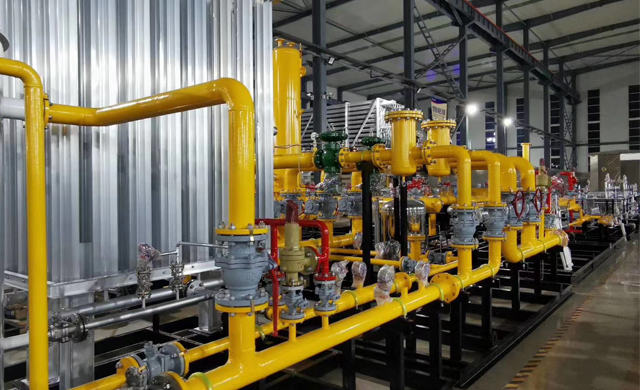
Dec . 07, 2024 05:22
Back to list
صمام التحكم الهوائي
Air Control Valve An Essential Component for Fluid Management
Air control valves are pivotal components in various industrial applications, ensuring the precise regulation of air flow within systems. These valves are essential for managing pneumatic systems—where compressed air is utilized to transmit energy. Typically found in manufacturing plants, automotive systems, and HVAC applications, air control valves contribute significantly to operational efficiency and equipment longevity.
What is an Air Control Valve?
An air control valve is a device that regulates the flow of air within a system. It can open, close, or partially obstruct air passage to control pressure and flow rate. These valves come in various types, including manual valves, solenoid valves, and pneumatic actuated valves, each designed to cater to specific operational needs.
How Does it Work?
The primary function of an air control valve is to manage the volume and pressure of the air flowing through a system. When an air control valve opens, it allows compressed air to flow into the system, which can then be used for various applications, such as powering tools, controlling machinery, or facilitating automated processes. When the valve is closed, the flow is restricted, leading to a decrease in pressure and ultimately controlling the system's functionality.
The control mechanisms of these valves vary. For instance, solenoid valves operate electrically. When activated, the solenoid creates a magnetic field that shifts a plunger, opening or closing the valve. This operation enables quick responses in systems where immediate adjustments are needed, such as in robotic applications.
Applications of Air Control Valves
.
1. Manufacturing In automated production lines, these valves help regulate air pressure supplied to pneumatic machines, ensuring optimal performance and preventing damage due to overpressure.
صمام التحكم الهوائي

2. HVAC Systems Within heating, ventilation, and air conditioning systems, air control valves play a critical role in maintaining air distribution and efficiency, impacting both comfort and energy consumption in buildings.
3. Automotive Industry In vehicle assembly processes, these valves control the air used in pneumatic tools for bolting, fastening, and even painting, thereby enhancing precision and productivity.
4. Robotics In automated systems and robotics, air control valves are crucial for controlling the actuators that drive robotic arms and tools, enabling complex maneuvering and operations.
Advantages of Using Air Control Valves
Incorporating air control valves into a system offers several advantages
- Efficiency By precisely controlling air flow, these valves help optimize energy use and reduce wastage, leading to lower operational costs.
- Safety Proper air management prevents hazardous pressure buildup, which can lead to equipment failure or accidents.
- Flexibility The variety of valve types available allows designers to tailor systems to specific operational requirements, from simple manual adjustments to complex automated controls.
In conclusion, air control valves are integral to various industrial processes, providing the necessary control mechanisms for air flow and pressure management. Their versatility and efficiency make them indispensable in modern automation and manufacturing practices. Understanding their function and application can lead to optimized systems, contributing to enhanced productivity and safety across industries. As technology continues to evolve, advancements in air control valve design will further enhance their capabilities and efficiencies, making them a keystone in fluid management systems.
Latest news
-
Safety Valve Spring-Loaded Design Overpressure ProtectionNewsJul.25,2025
-
Precision Voltage Regulator AC5 Accuracy Grade PerformanceNewsJul.25,2025
-
Natural Gas Pressure Regulating Skid Industrial Pipeline ApplicationsNewsJul.25,2025
-
Natural Gas Filter Stainless Steel Mesh Element DesignNewsJul.25,2025
-
Gas Pressure Regulator Valve Direct-Acting Spring-Loaded DesignNewsJul.25,2025
-
Decompression Equipment Multi-Stage Heat Exchange System DesignNewsJul.25,2025

